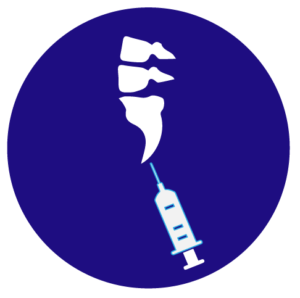
CAUDAL EPIDURAL INJECTIONS
Caudal epidurals are steroid injections given in the lowest part of the sacrum to treat some types of low back pain and sciatica.
Caudal Epidural Injection
Caudal epidurals are steroid injections given in the lowest part of the sacrum to treat some types of low back pain and sciatica. The caudal epidural is injected into the spinal epidural space, the area surrounding the dura, the protective lining or membrane of the nerve roots in the spine. The injection bathes the nerves in the lower spine with a steroid and a diluted local anaesthetic, hopefully resulting in reduced leg and back pain. The caudal epidural is generally performed as a day case procedure under sedation or sometimes under a local anaesthesia.
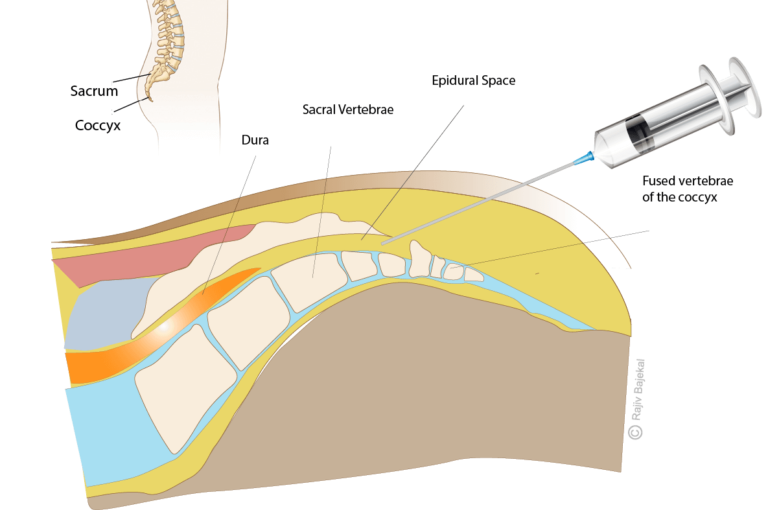


How is a caudal epidural given?
A caudal epidural is administered into the lowest part of the sacrum into the epidural space through the sacral hiatus
How do I prepare for the procedure?
The procedure needs you to have an empty stomach with no solids or milky drinks consumed for at least 6 hours before the injection. Chewing gum is also not permitted. You can drink water up to 2 hours before the procedure.
You must inform my anaesthetist, the nurse looking after you, preassessment team and me of all the medications you are taking, any allergies that you may have including drug reactions as these can seriously impact your surgery and recovery. Drugs such as aspirin, clopidogrel, and other blood thinners may need to be reviewed or stopped under guidance before injection. If you are diabetic, especially on insulin, this needs to be highlighted early.
What should I expect when I come into the hospital?
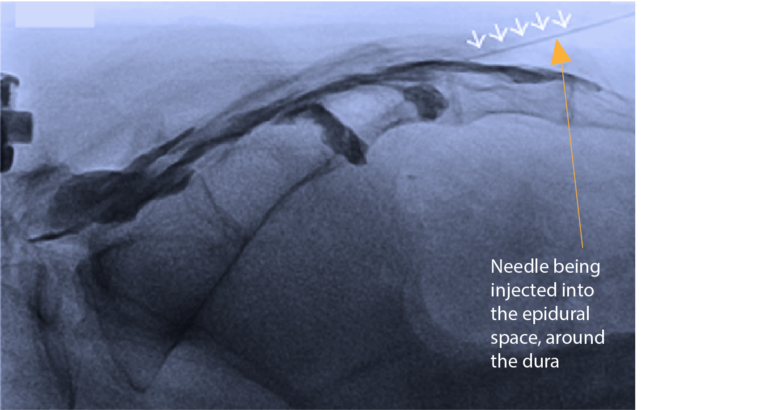


X-ray showing a caudal epidural being administered
The injection is administered into the epidural space around the dura as shown in this x-ray picture
What does the procedure involve?
I do this procedure under sedation and sometimes with just a local anaesthetic. You will have a cannula inserted into your vein to give you a dose of sedation to make you comfortable if your procedure is being done under sedation. I will sterilize and numb an area of skin on the lower back, just above their buttocks, with a local anaesthetic. I will then use a fluoroscopic x-ray to insert a thin needle into your back, just above your tailbone. First, a dye is injected to confirm that the needle has reached into the caudal space. Once verified, I will inject a mixture of some saline, a numbing agent- local anaesthetic (lignocaine) and a steroid (Kenalog). The steroid reduces pain by working as a potent anti-inflammatory agent. The medicines then spread in the epidural and caudal spaces, hopefully reducing nerve inflammation and pain. The caudal epidural is generally performed as a day case procedure needing patients to check-in for a few hours.
What are the risks of a caudal epidural?
As with any procedure, there are some risks. There may be mild discomfort associated with having an injection. Although unlikely, the injection may sometimes cause a temporary flare of back or leg pain, and some people also experience pins and needles in their legs. Occasionally you may experience redness of your face which could last a day. This is thought to be due to a preservative in the steroid. Women sometimes report some irregularities in their periods for a couple of cycles.
What happens after a caudal epidural injection?
When can I start driving?
What should I do when I get home?
- Driving or rigorous activities are not recommended for 24 hours after a caudal injection, as it takes time for the anaesthesia to wear off. Typically, you can start normal activities the next day. You can resume your regular diet and medication.
- Most patients experience pain relief in 3 days, though sometimes it may take up to 7-10 days for the steroid to start working.
- A full discussion of the benefits and risks of the procedure will be had with you at the consultation. If you have any concerns about the procedure, please ask me during your consultation.
- I use the myrecovery app to get feedback from patients and data on success rates. You can download the app to your phone here. (https://www.myrecovery.app/rba).
Specially Customised for you
Your version of the app will be customised specifically for you, by your surgeon.
This app will provide you with video messages from your consultant, highlighting key points during your patient journey.
To aid in your recovery process, it will provide you with:
- Interactive exercise plans
- Demonstration videos
- Progress graphs
- Useful articles chosen by your clinical team and more.
This app is in conjunction with Total Orthopaedics. To download the app, please scan in the QR code below:
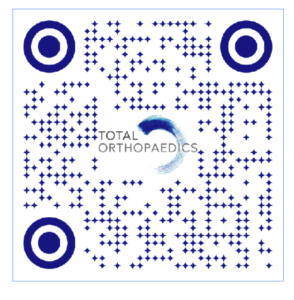


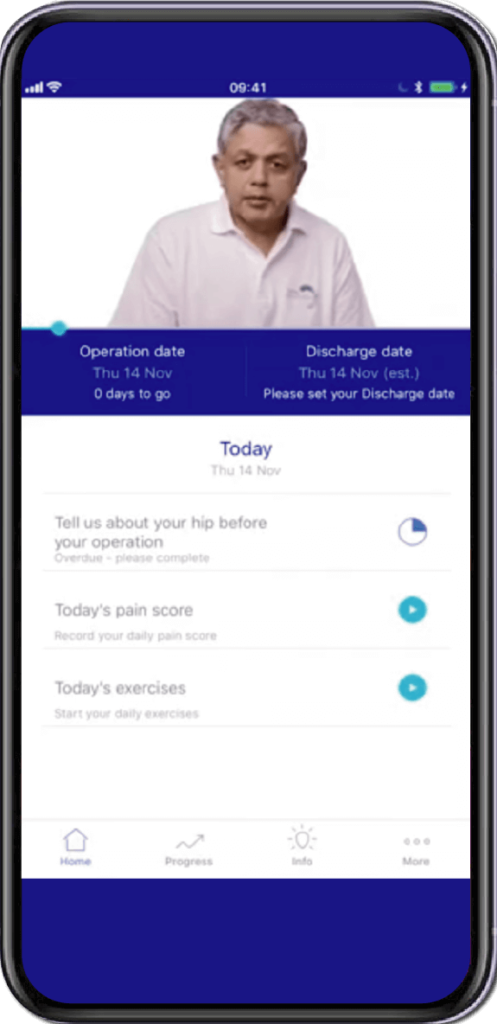





Rajiv Bajekal is a Consultant Orthopaedic Surgeon with special interest in Spinal and Back-related issues. He has developed a pragmatic approach to managing back pain and sciatica with non-surgical techniques, injections and minimally invasive techniques. Mr Bajekal is also a Board-Certified Lifestyle Medicine Practitioner and believes in providing lifestyle medicine advice to his patients for better long term health gains and better spinal health. He has been consulting since 1998. He consults both privately and on the National Health Service (NHS) and is passionate about making sure patients are in control of their healthcare.
Mr Bajekal is a member of the following institutions:
- British Medical Association (BMA)
- British Association of Spine Surgeons
- British Society of Lifestyle Medicine (BSLM)
- Plant-Based Health Professionals
- Patient Information
- Hospital Practices
- Spire Bushey Hospital
- BMI The Cavell
- BMI The King’s Oak
- Contact
- Blog
- Resources
- Glossary
Additional Links
Mr Bajekal works in conjunction with Total Orthopaedics UK. For more details please click here.
For more detailed information on plant-based nutirition please visit: www.rohinibajekal.com
For more detailed information on women’s health please visit: www.nitubajekal.com
